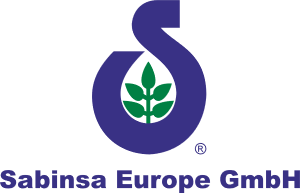Epidemiological data and laboratory studies provide increasing evidence of the role of phytonutrients in the diet, in healthy aging and longevity. Researchers in the late 1970s noted that residents in certain areas of France who avidly consumed red wine, had lower incidence of heart disease than other Western populations, even though their diets were high in fat. This is the well known French Paradox which led to the discovery of the healthful role of antioxidant polyphenols in red wine.
Oxidative stress resulting from free radical pathology is believed to accelerate aging. Vital components of the cell such as the mitochondria (the energy centers), functional proteins, lipids and DNA are damaged by free radicals. Cross linking and glycation of proteins, such as collagen, results in the formation of advanced glycation end products (AGE) which accumulate with age, and induce stiffening of cartilage and extracellular matrix, resulting in cataracts in the eyes and arthritis in the joints. In the cardiovascular system, aging is associated with a decrease in elasticity and an increase in stiffness of the arteries. Glucose tolerance progressively declines with age, and there is a high prevalence of type 2 diabetes in the aging population. Kidney functions, liver functions and sensory perception also deteriorate with age, and the skin loses elasticity and texture.
Malabsorption of vital nutrients in the elderly, results in a compromised immune system and lowered resistance to infection. Hormonal imbalances associated with menopause and aging, affect bone turnover, muscle mass, strength, appearance and mental capabilities. In males, aging is often associated with impaired prostate functions.
Biomarkers or physiological indices of aging include lean body mass, bone density, strength, BMR (basal metabolic rate), body fat percentage, aerobic capacity, blood pressure, insulin sensitivity, cholesterol/HDL ratio, memory / cognitive functions, immune functions and body temperature regulation. Nutritional interventions potentially improve cellular resistance to oxidative stress, and enhance the quality of life during aging. A few examples are presented here.
The antioxidant effects of curcuminoids from turmeric, (and their derivative tetrahydrocurcuminoids), combined with their known inhibitory effects on proinflammatory enzymes such as Cyclooxygenase 2 (Cox-2) render them useful as ingredients in nutraceutical formulations for antiaging support, and in topical formulations designed to maintain general skin health and integrity. Tetrahydrocurcuminoids have also been found to inhibit the activity of tyrosinase, an enzyme that participates in melanogenesis, and offer protection against inflammation induced by ultraviolet rays, with potential applications in lightening age spots and in offering protection against sun damage. Thus curcuminoids and their derivatives potentially offer mutifunctioanl support to healthy aging.
Selenium in bioavailable organic forms (such as L(+) Selenomethionine found in cereals and other plant foods, and Methylselenocysteine, found in selenium enriched garlic and broccoli) is reported to support immune functions, manifest antiviral effects and inhibit tumor proliferation. The largest ever prostate cancer prevention clinical trial with 32,000 subjects, The Selenium and Vitamin E Cancer Prevention Trial (SELECT) sponsored by the National Cancer Institute in the U.S. is currently underway, and seeks to study the health benefits of Selenium (as Selenomethionine*) and vitamin E, in this context. An associated trial Prevention of Alzheimer’s Disease by vitamin E and Selenium (PREADVISE) is also in progress.
Recent research also established the link between obesity and the development of Type 2 diabetes, suggesting mechanisms for nutraceutical interventions. Researchers identified a mechanism that helps explain how the hormone leptin (originally termed the “satiety signal”), is involved in the metabolism of fatty acids in muscle. Recent studies suggest that Garcinia cambogia extract efficiently improved glucose metabolism and displayed leptin-like activity in mice.1 Garcinia cambogia extract (such as Citrin? products from Sabinsa Corporation) is a well known dietary supplement that supports weight loss and healthy body composition.
Do nutraceuticals hold the key to longevity? Calorie restriction is reported to prolong life span in laboratory animals. A study on yeast showed that increasing the activity of a single gene, SIR2 could extend their life span. An analogous gene, SIRT1 was located in humans. Polyphenols such as quercetin found in apples and tea, and resveratrol (found in grapes and red wine) were found to increase SRT1 activity in a laboratory screening. Interestingly, resveratrol was found to increase SRT1 activity 13-fold.2 Future research will identify similar roles for other antioxidant nutraceuticals, as well.
References:
1. Hayamizu K et al. (2003) Fitoterapia. 74(3):267-73. 2. Hall, S.S. (2003) Science 301(5637):1165
Contact Sabinsa Corporation for nutraceutical and cosmeceutical ingredients that support healthy aging.
SeleniumSelect®, Sabinsa’s trademarked product is being used in this study







